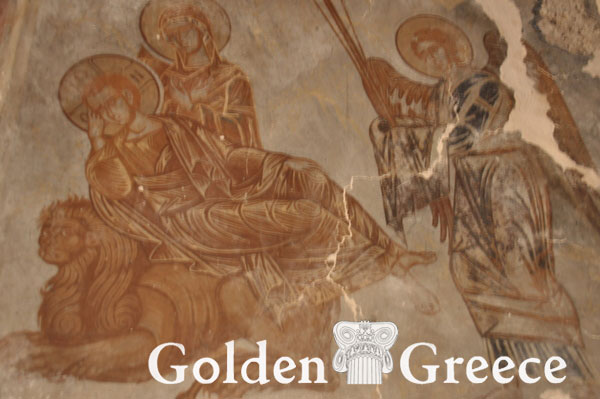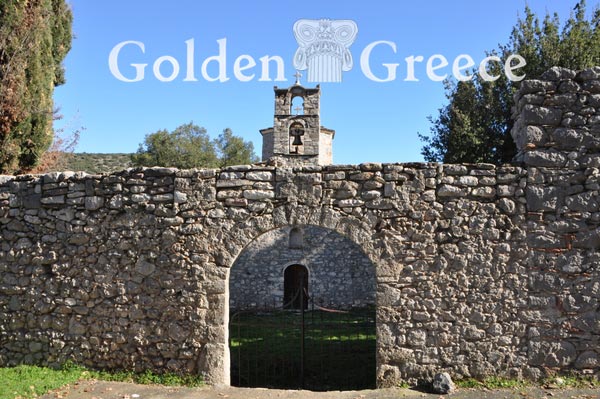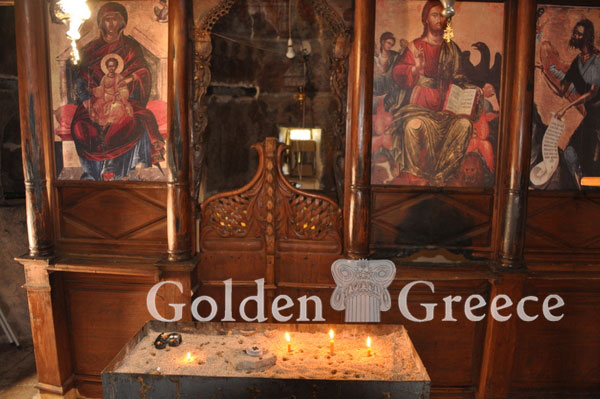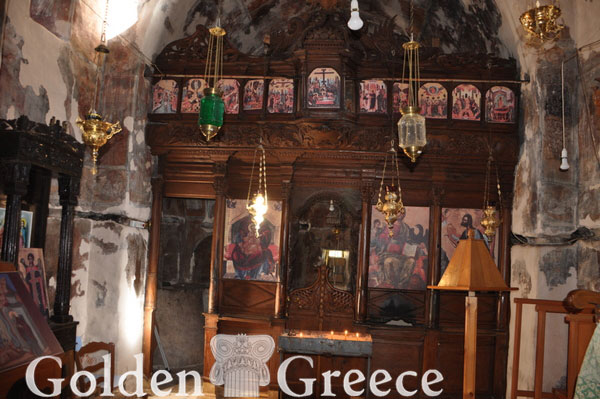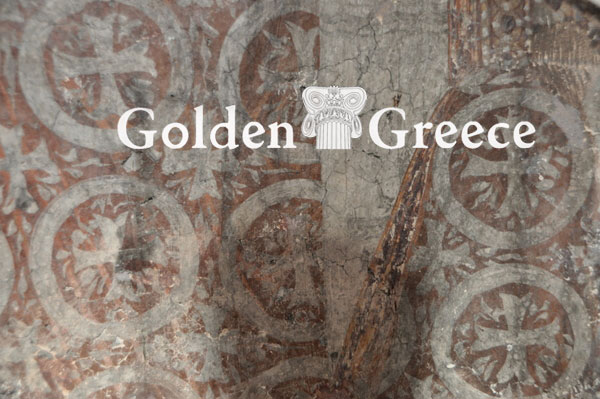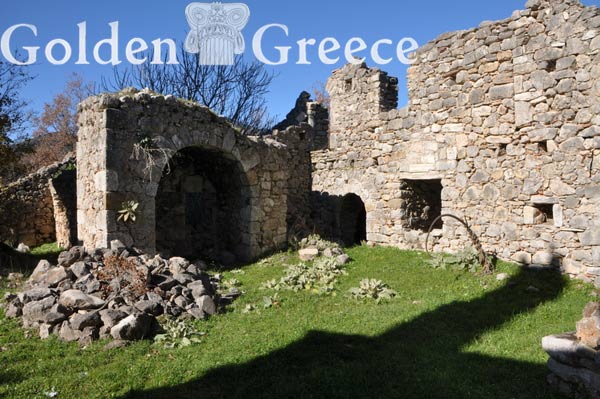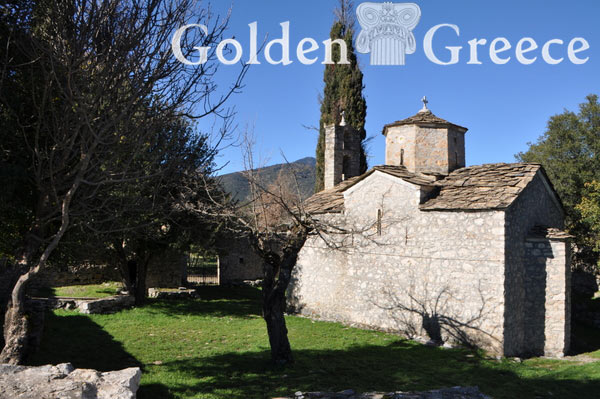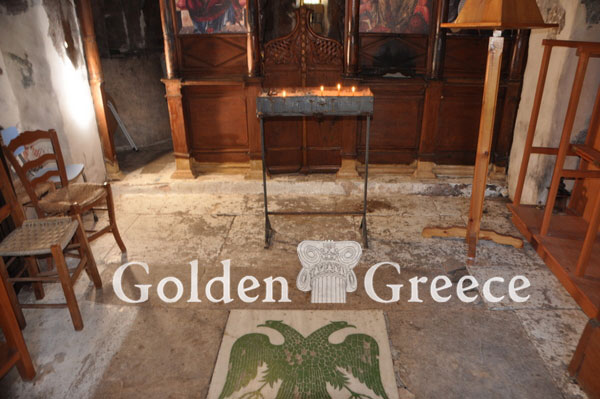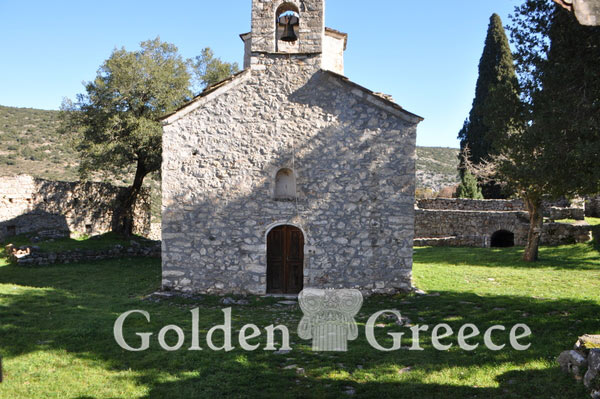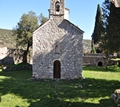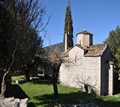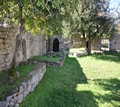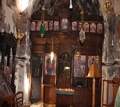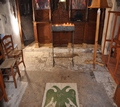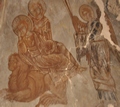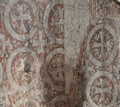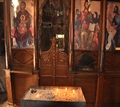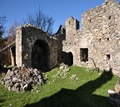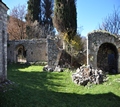
It is an old and picturesque monastery located at a distance of 3 km from Agios Vasilios Kynourias, in a beautiful and green location near the country road that leads to the village and lower than its level.
Regarding the name of the monastery, it is believed to come from a mulberry tree.
The monastery is surrounded by a fortress wall and one enters the interior through a magnificent arched gate. The monastery was burned by Ibrahim during his invasion of the Peloponnese and was finally abandoned in 1834.
The catholicon is of cruciform inscribed style with an octagonal dome and has been preserved. Its dome was decorated with inlaid painted plates, of which only two survive today. Its roof is covered by slate slabs, a characteristic building material of the buildings in the wider area. The temple has a two-lobed bell tower and a semi-hexagonal arch in the sanctuary.
Inside the church, the marble floor with a lion relief, a popular motif of folk art and possibly a Byzantine symbol, stands out. The church's icon painting (probably done in the 17th century) is remarkable, although with several damages. The figures of the Saints, the figure of the Samaritan woman, as well as the image of Taxiarchis stand out with their delicate expressiveness and modesty.
The written testimonies that refer to the life and activity of the Monastery cover the period between 1744 and 1834. Two bishops of the later Metropolis of Reonto Prastos - Iakovos and Dionysios - are involved in its history, which shows that the presence of the Monastery was strong in events of that time.
Remains of cells and buildings of the enclosure are also preserved, some of which are currently being restored. One of the cells has already been maintained. The church celebrates on September 6 (commemoration of the miracle of the Archangel Michael in Chonai). In the past, the monastery received many pilgrims.
Editor: Fotini Anastasopoulou
